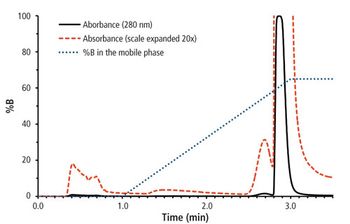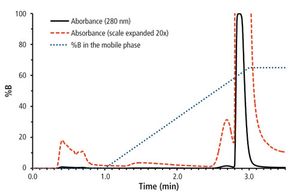
Ion mobility mass spectrometry (IMMS) is a two-dimensional technique that allows separation of ionized molecules based on molecular size, shape, and mass‑to‑charge ratio (m/z). It has rapidly become a valuable application for analyzing isomeric compounds in a complex matrix (e.g., proteomic and lipidomic samples) or complex mixtures of structurally related and isobaric analytes (e.g., oil samples or polymer blends). IMMS was investigated as a possible technique to compare purported generic products with Copaxone®, a drug for treating relapsing‑remitting multiple sclerosis, which contains a very complex mixture of synthetic peptides. The analysis was performed on 15 randomly chosen batches of Copaxone® and 5 batches of purported generics that are marketed drugs in their country of origin. All samples were compared to a reference batch of Copaxone® (P53961) using Waters HDMS Compare software. The analysis produced heat maps that highlighted significant intensity differences in peptides at various m/z and drift times. A quantitative assessment of these heat maps was also performed by summing all the pixel values to produce a total pixel value (TPV). While the average TPV for the Copaxone® batches was 510811, the TPVs of the purported generics were 8-13 fold higher (2301682 to 4276572).

